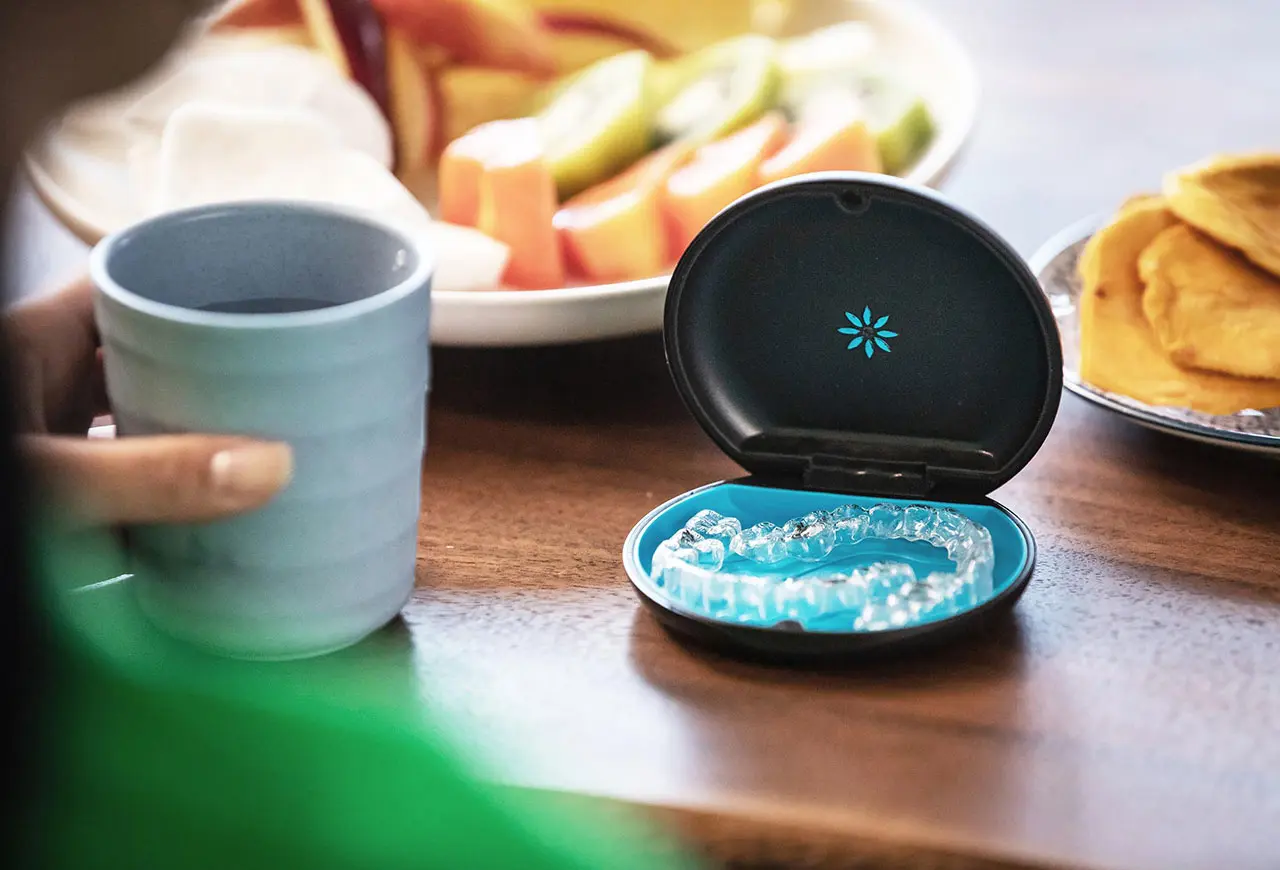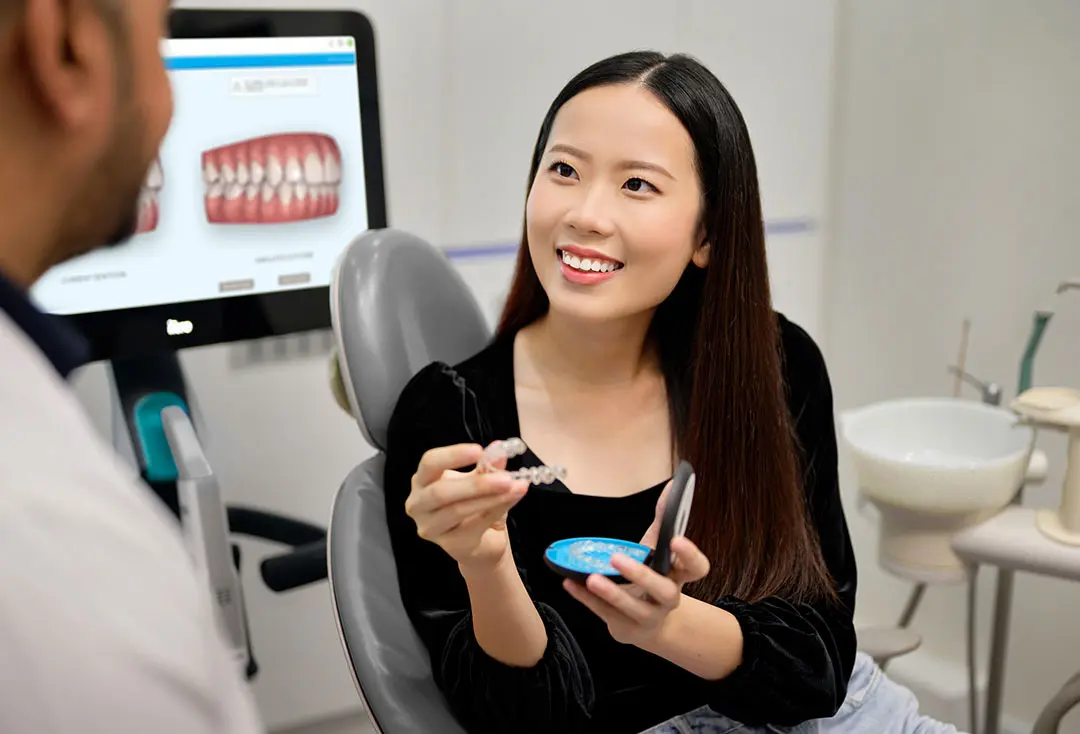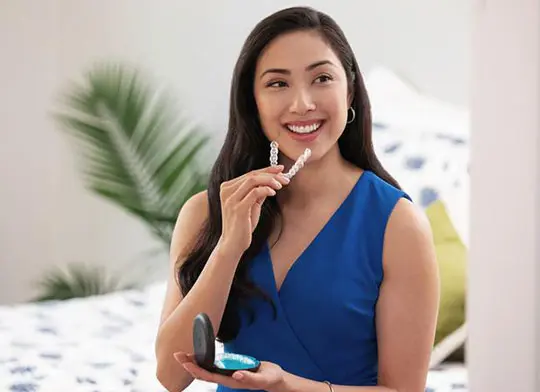Get answers to your questions about Invisalign aligners. Learn about the treatment process, costs, insurance options, and how Invisalign treatment compares to braces.
What are Invisalign aligners?
Invisalign aligners are an alternative to braces for straightening teeth for kids, teens, and adults. Like braces, it can help people align their teeth and achieve the smile they always wanted. Unlike braces, Invisalign aligners are removable, virtually invisible, faster1 and more comfortable2 than braces.
How do Invisalign aligners work?
When you straighten your teeth with Invisalign aligners, you'll wear a series of invisible and removable aligners that will gradually move your teeth into place. Your orthodontist will fit you for your first set of aligners, and you'll check in with them according to your orthodontist’s instructions to monitor progress.
How are Invisalign aligners different from braces?
Here are four reasons why Invisalign aligners are different from braces:
Invisalign aligners are virtually invisible
Invisalign clear aligners are made from proprietary SmartTrack material, making them virtually invisible. People probably won’t even notice you’re wearing them!Unlike braces, Invisalign aligners are removable
There are no metal brackets or wires with Invisalign aligners. You can easily remove your aligners to eat, drink, brush, or floss. Because they’re removable, there are no food restrictions with Invisalign aligners like there are with braces. With Invisalign, you’re free to eat popcorn, nuts, corn on the cob, candy, gum and more all while straightening your smile.Invisalign aligners straighten teeth faster than braces1
Invisalign treatment can be completed in as little as 6 months,3 depending on the complexity of your case. But you could start seeing results in a matter of weeks.Invisalign aligners are more comfortable than braces
Invisalign clear aligners are more comfortable than traditional braces.2 They have no metal brackets or wires that could break and irritate your mouth.
Do Invisalign aligners cost more than braces?
In most cases, the cost of Invisalign treatment is comparable to the cost of braces. Your doctor will determine the cost of your treatment based on case complexity.
Do Invisalign aligners hurt?
When you first start Invisalign treatment, your aligners apply pressure to your teeth. This can cause slight discomfort at first. Many people note a feeling of tightness in their teeth and mouth. However, it usually only lasts a day or two.
Talk to your orthodontist if you are concerned about or are experiencing discomfort while wearing your Invisalign aligners.
Do you sleep with Invisalign aligners?
Sleeping with your Invisalign aligners is necessary because you must wear your Invisalign aligners for 20 to 22 hours daily to get the desired results.
What are the disadvantages of Invisalign aligners?
Invisalign treatment requires consistent and responsible wear. Because Invisalign aligners are removable, you must be diligent about wearing your aligners for the recommended 20 to 22 hours daily.
Invisalign treatment may not be suitable for everyone. Consult with your dentist or orthodontist, who can evaluate your need and determine the best treatment orthodontic treatment for you.





